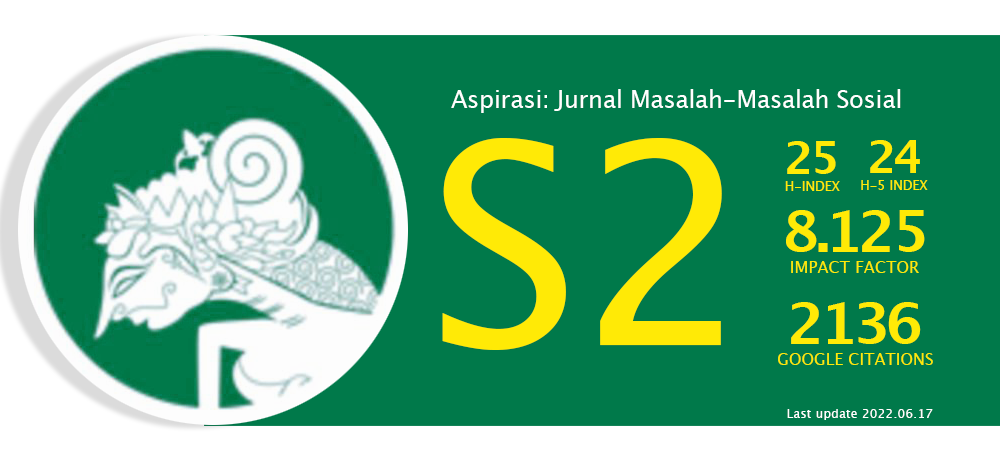GBHN DAN PERUBAHAN PERENCANAAN PEMBANGUNAN DI INDONESIA GBHN
Abstract
Keywords
Full Text:
UntitledReferences
Buku
Bratakusumah, Deddy Supriady. 2003. Implikasi Perubahan UUD 1945 Terhadap Sistem Perencanaan Pembangunan Nasional (makalah tidak diterbitkan)
Edelman, Marc, dan Angelique Haugerud. 2005. The Anthropology Of Development And Globalization: From Classical Political Economy To Contemporary Neoliberalism. Malden, Mass: Blackwell Pub
Escobar, Arturo. 1995. Encountering development: The Making and Unmaking of the Third World. Princeton: Princeton University Press
Ferguson, James. 1990. The Anti-politics machine: “Development,” Depoliticization, and Bureaucratic Power in Lesotho. Cambridge and New York: Cambridge University Press
Gardner, K. Dan D. Lewis. 1996. Anthropology, Development and the Crisis of Modernity, London: Pluto Press. Chapter 1
Muhtamar, Syafruddin, Abdul Razak, M. Yunus Wahid. 2012. Relevansi Perencanaan Pembangunan Nasional Dengan Amanat Konstitusi (Studi Tentang Perbandingan Arah Kebijakan Pembangunan Hukum Dalam GBHN dan RPJPN). Makasar: Program Pascasarjana UNHAS
Poesponegoro, Marwati Djoened, Nugroho Notosusanto. 2008. Sejarah nasional Indonesia: Zaman Jepang dan zaman Republik Indonesia, ±1942-1998. Jakarta: Balai Pustaka
Rostow, W.W. 1960. The Stages of Economic Growth: A Non-Communist Manifesto. Cambridge: Cambridge University Press
Tim Penyusun Setjen MK. 2010. Naskah Komprehensif Proses dan Hasil Perubahan UUD 1945, Naskah Komprehensif Perubahan Undang-Undang Dasar Negara Republik Indonesia Tahun 1945, Latar Belakang, Proses, dan Hasil Pembahasan, 1999- 2002, Buku III Lembaga Permusyawaratan dan Perwakilan, Jilid 1. Jakarta: Sekretariat Jenderal dan Kepaniteraan Mahkamah Konstitusi Tim Penyusun Setjen MPR RI. 2010. Risalah Perubahan
Undang-Undang Dasar Negara Republik Indonesia Tahun 1945. Jakarta: Sekretariat Jenderal Majelis Permusyawaratan Rakyat Republik Indonesia
Willis, Katie. 2011. Theories and Practices of Development. Second ed. Abingdon & New York: Routledge.
Jurnal
Paiement, Jason Jacques. 2007.“Anthropology and Development”. National Association for the Practice of Anthropology Bulletin May 2007, Vol. 27, No. 1: 196–223. New York:Wiley-Blackwell.
Rist, Gilbert. 2007. “Development as a Buzzword”. Development in Practice, Volume 17, Numbers 4 –5.
Internet
Adiningsih, Sri. 2011. “Bahan Diskusi: Sistem Pelaksanaan Pembangunan Nasional”. http://diklatpimlan.files.wordpress.com/2010/04/sriadiningsih-pembangunannaslan.pdf diakses tanggal 8 Juni 2014
Rosidi, Iman. 2014. “Golkar Pelopori Perlunya GBHNDihidupkan Kembali”. http://www.sindotrijaya.com/news/detail/5620/golkar-pelopori-perlunyagbhn-dihidupkan-kembali#.VJbX2v88B. Diakses tanggal 8 Juni 2014.
Suharman, Tri. 2014. “Habibie: Kembalikan GBHN”.http://www.tempo.co/read/news/2014/03/26/078565577/Habibie-Kembalikan-GBHN-. Diakses tanggal 8 Juni 2014.
Tim Perumus Konvensi Kampus Xdan Temu Tahunan FRI XVI. 2014“Rumusan Konvensi”. http://fri. or.id/rumusan-konvensi/. Diakses tanggal 8 Juni 2014.
Peraturan Perundang-undangan
Ketetapan Majelis Permusyawaratan Rakyat Sementara Republik Indonesia No. I/MPRS/1960 Tentang Manifesto Politik Republik Indonesia Sebagai
Garis-Garis Besar Daripada Haluan Negara Ketetapan Majelis Permusyawaratan Rakyat Republik Indonesia Nomor: II/MPR/1998 Tentang Garis-
Garis Besar Haluan Negara Ketetapan Majelis Permusyawaratan Rakyat Sementara Republik Indonesia No. II/MPRS/1960 Tentang
Garis-Garis Besar Pola Pembangunan Nasional Semesta Berencana Tahapan Pertama 1961-1969
Ketetapan Majelis Permusyawaratan Rakyat Republik Indonesia Nomor: X/MPR/1998 Tentang Pokok Pokok Reformasi Pembangunan Dalam Rangka Penyelamatan Dan Normalisasi Kehidupan Nasional Sebagai Haluan Negara
Ketetapan Majelis Permusyawaratan Rakyat Republik Indonesia Nomor: Nomor IV/MPR/1999 Tentang
Garis-Garis Besar Haluan Negara Tahun 1999 –2004
Undang-Undang Dasar Tahun 1945 (asli)
Undang-Undang Dasar Negara Republik Indonesia Tahun 1945 (perubahan)
Undang-Undang No. 25 tahun 2004 tentang Sistem Perencanaan Pembangunan Nasional (SPPN)
Undang-Undang No. 17 tahun 2007 tentang Rencana Pembangunan Jangka Panjang Nasional (RPJPN) 2005-2025.
Penetapan Presiden Nomor 1 Tahun 1960 tentang Garis-Garis Besar Dari Pada Haluan Negara Tanggal 29 Januari 1960.
DOI: https://doi.org/10.46807/aspirasi.v5i2.455
Refbacks
- There are currently no refbacks.







